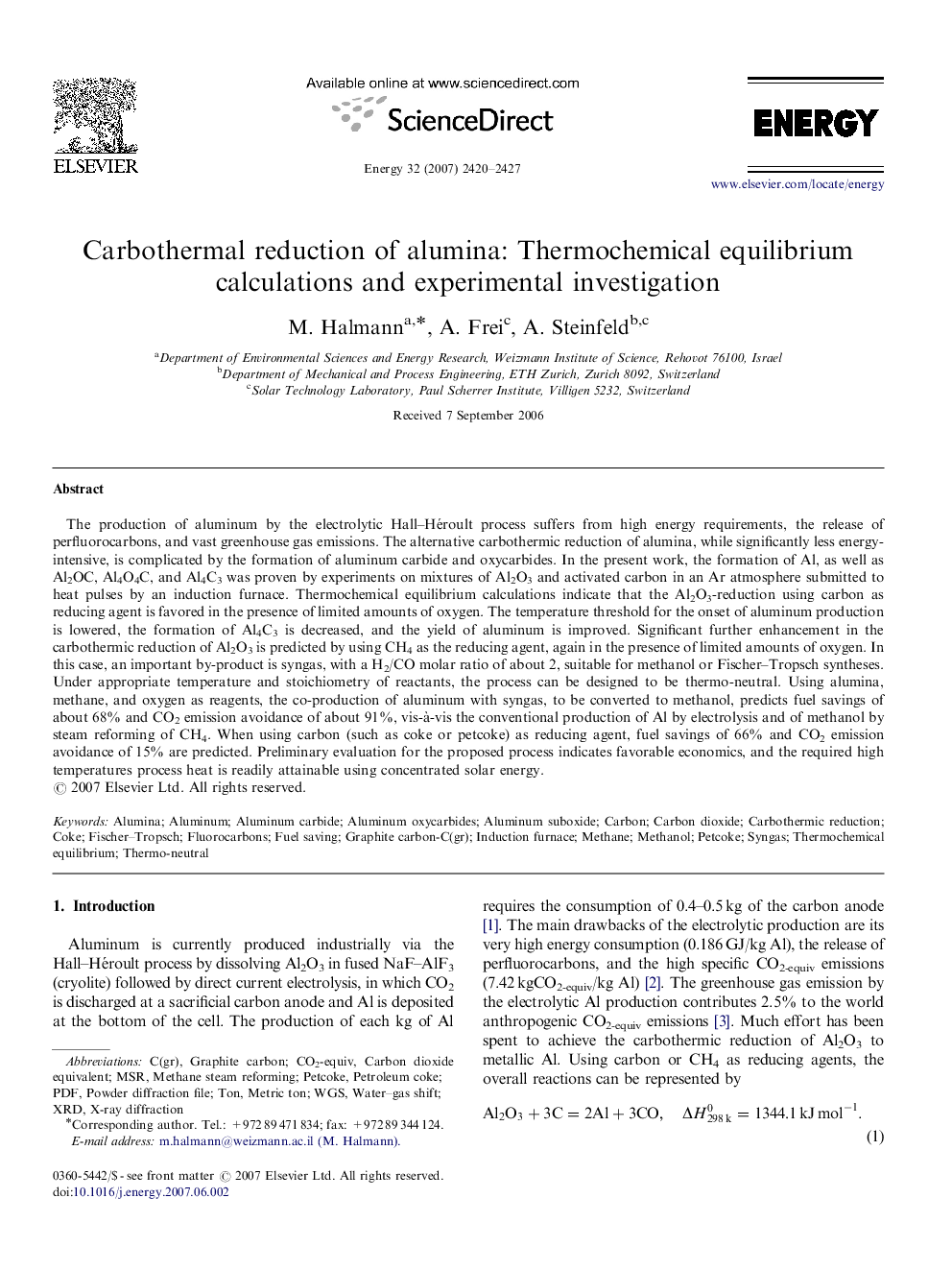| کد مقاله | کد نشریه | سال انتشار | مقاله انگلیسی | نسخه تمام متن |
|---|---|---|---|---|
| 1735992 | 1016201 | 2007 | 8 صفحه PDF | دانلود رایگان |

The production of aluminum by the electrolytic Hall–Héroult process suffers from high energy requirements, the release of perfluorocarbons, and vast greenhouse gas emissions. The alternative carbothermic reduction of alumina, while significantly less energy-intensive, is complicated by the formation of aluminum carbide and oxycarbides. In the present work, the formation of Al, as well as Al2OC, Al4O4C, and Al4C3 was proven by experiments on mixtures of Al2O3 and activated carbon in an Ar atmosphere submitted to heat pulses by an induction furnace. Thermochemical equilibrium calculations indicate that the Al2O3-reduction using carbon as reducing agent is favored in the presence of limited amounts of oxygen. The temperature threshold for the onset of aluminum production is lowered, the formation of Al4C3 is decreased, and the yield of aluminum is improved. Significant further enhancement in the carbothermic reduction of Al2O3 is predicted by using CH4 as the reducing agent, again in the presence of limited amounts of oxygen. In this case, an important by-product is syngas, with a H2/CO molar ratio of about 2, suitable for methanol or Fischer–Tropsch syntheses. Under appropriate temperature and stoichiometry of reactants, the process can be designed to be thermo-neutral. Using alumina, methane, and oxygen as reagents, the co-production of aluminum with syngas, to be converted to methanol, predicts fuel savings of about 68% and CO2 emission avoidance of about 91%, vis-à-vis the conventional production of Al by electrolysis and of methanol by steam reforming of CH4. When using carbon (such as coke or petcoke) as reducing agent, fuel savings of 66% and CO2 emission avoidance of 15% are predicted. Preliminary evaluation for the proposed process indicates favorable economics, and the required high temperatures process heat is readily attainable using concentrated solar energy.
Journal: Energy - Volume 32, Issue 12, December 2007, Pages 2420–2427